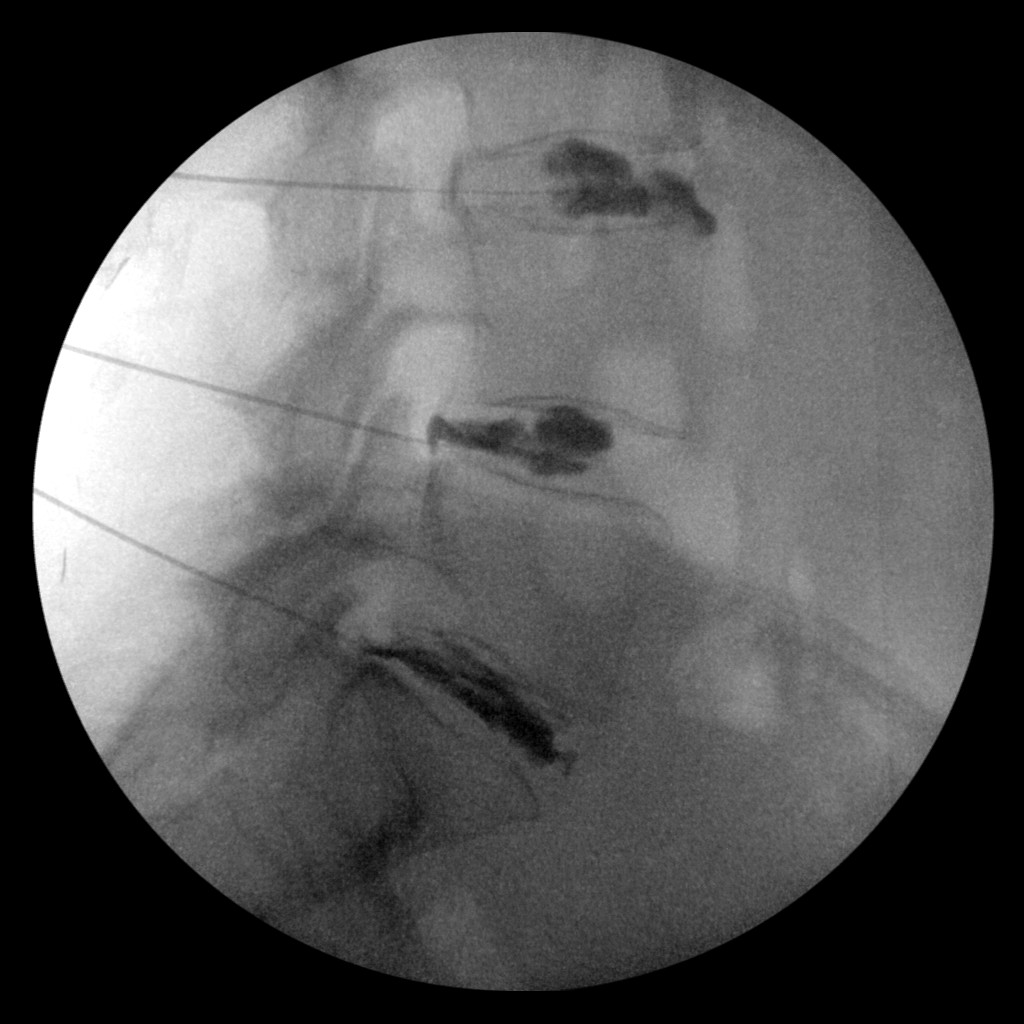Lumbar Discography

Anesthetic: Local with IV sedation and antibiotics
Indications: Back pain can originate from many different sources. That being said, it is extremely important to determine the specific cause of your pain especially if surgery is being considered.
The most common cause of mechanical low back pain is degenerative disc disease. However, the vast majority of people have degenerated discs in their spine. So how do we know if these discs are your pain generators? A procedure known as a lumbar discogram can be performed to determine this and more specifically which one(s) are the culprits.

Contraindications/Reasons why you may not have your injection today:
- Bleeding disorders/low platelet counts
- Medications that thin your blood (please review this section)
- Current infection
- No driver
- Your symptoms have changed and/or improved
- Patient refusal
- Procedure not approved by your insurance
- Poorly controlled high blood pressure that may be giving you symptoms
- Allergies to the any of the medications that is being used
Potential side effects/risks of the procedure:
- Increased pain
- Numbness in lower extremities that is short lived
- Infection
- Bleeding
- Allergic reaction to medications used to clean your skin and/or medications injected
- Seizures
- Stroke
- Nerve and/or spinal cord injury
Procedure:
During the procedure, you will be lying on your stomach. An x-ray machine is used to locate the specific levels of the spine which is believed to be causing your pain based upon where you hurt in your low back. After your skin is cleaned with an antiseptic solution, normally betadine unless you are allergic, a series of x-rays will be taken to guide the needle placement. The skin is localized with a local anesthetic. Another needle is then placed through the numb area of your skin and guided by the x-ray machine so that the tip of the needle lies within the center of the disc. This is done several more times in your low back until all needles are in place. The needles will then be connected to a special device that injects contrast into the disc and measures the pressure in the disc. It is important that as soon as you feel your normal baseline pain increase that you tell the provider. You may experience increased pressure/pain in your low back/buttocks region which is normal. Once the procedure is over, you will be sent to have a CT scan of your low back in order to assess how degenerated the discs are.
Typical length of the procedure:
45 minutes. Expect to be at the clinic for at least an hour after you have been checked in by the medical assistant into the preoperative area. Please plan accordingly.
How long do you expect pain relief:
This is purely a diagnostic test meant to determine if your discs are your pain generators. Unfortunately, it is meant to increase your pain during the procedure. At the end of the procedure, however, pain medication can be given to you in your IV for any residual pain.